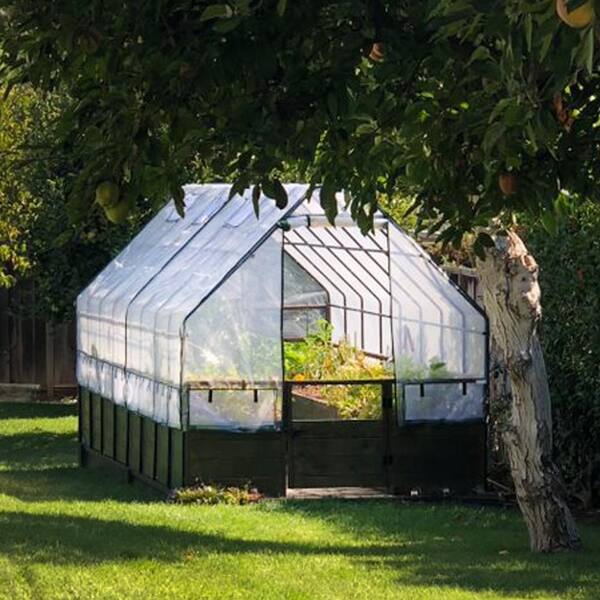Looking to expand your knowledge and expertise on fences? Look no further! With our blog, “http://fencedude.com,” we aim to provide you with comprehensive and engaging content all about fences. From different types and sizes, to shapes and materials, we cover it all. Our goal is to help you make informed decisions when selecting and installing fences by offering valuable knowledge and practical advice. In this article, we will explore a variety of fence options for greenhouse enclosures, discussing the benefits, considerations, and suitability of different types. So whether you’re looking to enhance privacy, ensure security, enclose a backyard, or add decorative elements to your property, we’ve got you covered! And stay tuned for our 10 most commonly asked questions about fences at the end of this post for some valuable insights.
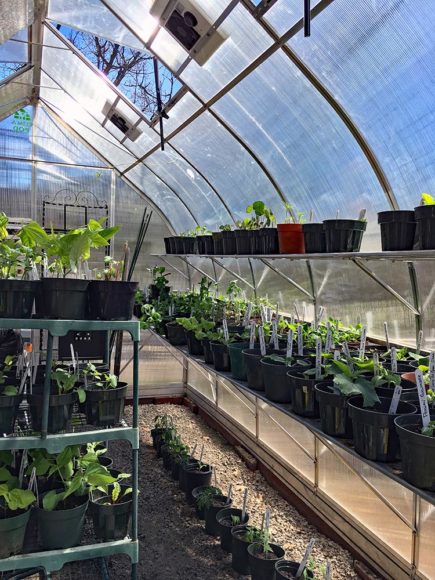
Researching Fence Options for Greenhouse Enclosures
If you’re considering building a greenhouse enclosure, one important aspect to consider is the type of fence you’ll use. Choosing the right fence can greatly impact the functionality and aesthetic appeal of your greenhouse enclosure. In this article, we’ll explore different fence options for greenhouse enclosures, discuss their advantages and disadvantages, and provide insights on selecting the right fence for your specific needs.
Understanding the Importance of Greenhouse Enclosures
Before delving into fence options, it’s important to understand the significance of greenhouse enclosures. Greenhouse enclosures are structures that protect plants from the elements, allowing them to thrive in a controlled environment. They offer numerous benefits such as extending the growing season, providing protection against pests and diseases, and creating optimal conditions for plant growth.
To maximize the benefits of a greenhouse enclosure, it’s crucial to choose a suitable fence that complements the structure and fulfills your specific requirements. Factors such as durability, maintenance, aesthetics, privacy, and security should all be taken into consideration when selecting a fence for your greenhouse enclosure.
Factors to Consider When Choosing a Fence for Greenhouse Enclosures
When selecting a fence for your greenhouse enclosure, there are several key factors to consider:
-
Durability: It’s important to choose a fence material that can withstand environmental conditions such as wind, rain, and sunlight. The fence should be able to endure long-term exposure without deteriorating or losing its structural integrity.
-
Maintenance: Consider the level of maintenance required for different fence materials. Some fences may require regular upkeep such as painting or staining, while others may be more low-maintenance.
-
Aesthetics: The appearance of the fence is also important, as it can enhance the overall visual appeal of your greenhouse enclosure. Choose a fence style and material that complements the architecture of your greenhouse and blends well with the surrounding landscape.
-
Privacy: Depending on your needs, you may want a fence that provides privacy for your greenhouse enclosure. Consider the level of privacy offered by different fence materials and designs.
-
Security: If security is a concern, look for fences that offer features such as sturdy construction, lockable gates, and height to deter unauthorized access.
-
Cost: Determine your budget for the fence and consider the cost of materials, installation, and long-term maintenance when making your decision.
By carefully considering these factors, you can make an informed choice when selecting a fence for your greenhouse enclosure.
Exploring Different Fence Types for Greenhouse Enclosures
There are several fence types commonly used for greenhouse enclosures, each with its own advantages and considerations. Let’s explore some of the popular choices:
Wooden Fences for Greenhouse Enclosures
Wooden fences are a classic choice for greenhouse enclosures, offering a natural and traditional look. They can be customized to suit various styles and are relatively easy to work with during installation.
Advantages of Wooden Fences for Greenhouse Enclosures
- Aesthetic appeal: Wooden fences add a rustic and natural charm to greenhouse enclosures, blending well with the surrounding landscape.
- Customizable: Wooden fences can be built to any height or design, allowing for flexibility in creating a unique enclosure.
- Versatility: Wood can be stained or painted to match your preferred color scheme, giving you plenty of options for customization.
- Cost-effective: Wooden fences are often more cost-effective compared to other materials like metal or vinyl.
Disadvantages of Wooden Fences for Greenhouse Enclosures
- Maintenance requirements: Wooden fences require regular maintenance such as staining or painting, as well as sealing against moisture to prevent rotting.
- Vulnerability to weather: Wood is susceptible to damage from exposure to rain, wind, and sunlight. It may warp or crack over time if not properly maintained.
- Lifespan: Wooden fences have a shorter lifespan compared to other materials like metal or vinyl. However, with proper care, they can still last for many years.
Maintenance Requirements for Wooden Fences
To ensure the longevity of your wooden fence for a greenhouse enclosure, regular maintenance is essential. Here are some maintenance tasks to consider:
- Cleaning: Remove dirt, debris, and mold from the fence surface using mild soap and water. Rinse thoroughly and allow the wood to dry completely.
- Staining or painting: Apply a protective stain or paint to the fence every few years to prevent moisture penetration and maintain its appearance.
- Sealing: Use a wood sealer or preservative to protect the fence against water damage. Apply according to the manufacturer’s instructions.
- Inspection: Regularly inspect the fence for signs of damage or wear. Repair or replace any broken or rotting boards promptly to prevent further deterioration.
By following these maintenance guidelines, you can ensure the longevity and attractiveness of your wooden fence for a greenhouse enclosure.
Chain-Link Fences for Greenhouse Enclosures
Chain-link fences are another popular option for greenhouse enclosures. They are known for their affordability, durability, and ease of installation.
Advantages of Chain-Link Fences for Greenhouse Enclosures
- Affordability: Chain-link fences are generally more budget-friendly compared to other fence types. This makes them a cost-effective option, especially for larger greenhouse enclosures.
- Durability: Chain-link fences are highly durable and can withstand various weather conditions. They are resistant to rot, pests, and corrosion, ensuring long-term functionality.
- Ease of installation: Chain-link fences are relatively easy to install, requiring minimal labor and time compared to some other fence types. This can save you both time and money.
- Visibility: Chain-link fences allow for high visibility, allowing you to easily monitor your greenhouse from the outside.
Disadvantages of Chain-Link Fences for Greenhouse Enclosures
- Limited privacy: Chain-link fences do not provide a high level of privacy, as they have open weaves that allow visibility. If privacy is a concern, additional measures such as privacy slats or planting hedges can be incorporated.
- Aesthetic appeal: Some people may find chain-link fences less visually appealing compared to other fence materials. However, this can be subjective and depend on personal preferences and the overall aesthetics of your greenhouse enclosure.
Choosing the Right Chain-Link Fence for Greenhouse Enclosures
When selecting a chain-link fence for your greenhouse enclosure, consider the following:
- Gauge and mesh size: Chain-link fences come in different gauges and mesh sizes. The gauge refers to the thickness of the wire, while the mesh size refers to the size of the openings in the chain-link fabric. Choose a gauge and mesh size that suits your specific needs, such as the level of security required or the protection of smaller plants from pests.
- Coating and color: Chain-link fences can be galvanized or coated with vinyl to enhance durability and appearance. Consider the coating type and color options available to ensure the fence complements your greenhouse enclosure.
- Gate options: If you require access to your greenhouse enclosure, consider different gate options available for chain-link fences. Ensure that the gate is secure and of appropriate size for your needs.
By considering these factors, you can choose the right chain-link fence for your greenhouse enclosure that meets your specific requirements.
Vinyl Fences for Greenhouse Enclosures
Vinyl fences are a popular option for those seeking a low-maintenance and aesthetically pleasing fence for their greenhouse enclosures.
Benefits of Vinyl Fences for Greenhouse Enclosures
- Low maintenance: Vinyl fences require minimal maintenance. Unlike wood, they do not require staining or painting. Regular cleaning with soap and water is usually sufficient to keep them looking their best.
- Durability: Vinyl fences are highly durable and can withstand harsh weather conditions. They are resistant to rot, pests, and UV damage, making them a long-lasting choice.
- Aesthetic appeal: Vinyl fences come in a variety of styles, colors, and textures, allowing you to choose a design that complements your greenhouse enclosure. They can mimic the appearance of wood, giving you the desired look without the maintenance requirements.
- Eco-friendly: Vinyl fences are often made from recycled materials and can be recycled at the end of their lifespan, making them an environmentally friendly choice.
Considerations for Using Vinyl Fences for Greenhouse Enclosures
While vinyl fences offer numerous benefits, there are a few considerations to keep in mind:
- Cost: Vinyl fences tend to be more expensive than some other fence types, such as chain-link or wooden fences. However, their long lifespan and low maintenance requirements can offset the initial cost over time.
- Installation: Vinyl fences require precise installation to ensure a secure and aesthetically pleasing result. It’s recommended to hire a professional fence installer to ensure a proper installation.
- Limited customization: Compared to wooden fences, vinyl fences have limited customization options. However, the wide variety of styles and colors available should still offer you ample choice.
Maintenance and Durability of Vinyl Fences for Greenhouse Enclosures
One of the key advantages of vinyl fences is their low maintenance requirements. However, to ensure their longevity and appearance, some maintenance tasks are still necessary:
- Cleaning: Regularly clean the fence with soap and water to remove dirt and debris. Rinse thoroughly and allow to air dry.
- Inspections: Periodically inspect the fence for signs of damage, such as cracks or loose components. Repair or replace any damaged parts promptly to maintain the fence’s integrity.
- Avoidance of physical damage: While vinyl fences are durable, they can get damaged if hit by heavy objects or exposed to extreme temperatures. Avoid placing heavy equipment or tools near the fence, and take caution during extreme temperature changes to prevent distortion.
- UV protection: If your vinyl fence is exposed to direct sunlight, consider applying a UV-protective coating to prevent fading or discoloration over time.
By following these maintenance practices, you can ensure the durability and longevity of your vinyl fence for a greenhouse enclosure.
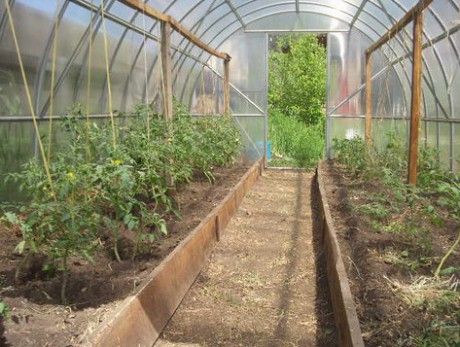
Metal Fences for Greenhouse Enclosures
Metal fences, such as aluminum or wrought iron, offer a combination of durability, security, and aesthetic appeal for greenhouse enclosures.
Pros and Cons of Metal Fences for Greenhouse Enclosures
Metal fences have their own advantages and disadvantages to consider:
- Durability: Metal fences are highly durable and can withstand harsh weather conditions. They are resistant to rot, pests, and warping, ensuring long-term functionality.
- Security: Metal fences provide a high level of security, making them ideal for greenhouse enclosures where protection from theft or unauthorized access is a concern.
- Aesthetic appeal: Metal fences can enhance the visual appeal of your greenhouse enclosure, especially when paired with decorative elements or intricate designs.
- Maintenance: Metal fences generally require very little maintenance. They do not require staining or sealing like wood and are more resistant to damage caused by weather exposure.
- Cost: Metal fences can be more expensive than some other fence materials like chain-link or vinyl. However, their longevity and security benefits can outweigh the initial cost.
While metal fences offer numerous advantages, there are a few considerations:
- Weight: Metal fences can be heavier than other fence types, which may require additional structural support during installation.
- Corrosion: Some metals, such as iron, can be prone to rust and corrosion over time. Regular maintenance and applying protective coatings or paints can help mitigate this issue.
- Heat absorption: Metal fences can absorb and retain heat, which may affect the temperature inside your greenhouse enclosure. Consider this factor if you live in a hot climate and have sensitive plants.
Selecting the Right Metal Fence for Greenhouse Enclosures
When choosing a metal fence for your greenhouse enclosure, consider the following:
- Material: Decide between options such as aluminum or wrought iron, taking into account their properties, costs, and aesthetic appeal.
- Coating: If using iron or steel, consider applying a protective coating to prevent rust and corrosion. Powder coating or galvanization can provide excellent durability and aesthetics.
- Height and design: Determine the height and design of the metal fence based on your specific requirements, including security, privacy, and architectural considerations.
- Gate options: Consider different types of gates suitable for metal fences, ensuring they provide sufficient access and security for your greenhouse enclosure.
By carefully considering these factors, you can select the right metal fence that meets your needs and enhances your greenhouse enclosure.
Choosing Fence Materials for Greenhouse Enclosures
When it comes to fence materials for greenhouse enclosures, there are several options to consider. Let’s explore the advantages and considerations for each:
Comparing Different Fence Materials for Greenhouse Enclosures
- Wood: Wooden fences offer aesthetic appeal and customization options but require regular maintenance to prevent rotting and warping. They tend to be more cost-effective compared to other materials.
- Chain-link: Chain-link fences are affordable, durable, and easy to install. They provide good visibility but may lack privacy. Additional measures may be required for increased privacy.
- Vinyl: Vinyl fences are low maintenance, durable, and come in a wide variety of styles and colors. They are more expensive but offer an eco-friendly option.
- Metal: Metal fences, such as aluminum or wrought iron, combine durability, security, and aesthetics. They require minimal maintenance but can be heavier and more costly.
Consider your priorities in terms of appearance, maintenance, durability, and budget to choose the fence material that best suits your specific needs.
Considering Cost and Durability of Fence Materials for Greenhouse Enclosures
Cost and durability are important factors to consider when selecting a fence material for a greenhouse enclosure:
- Wooden fences tend to be more cost-effective initially but may require regular maintenance and have a shorter lifespan.
- Chain-link fences are budget-friendly and durable, making them a cost-effective option for larger enclosures or areas where security is not a top concern.
- Vinyl fences have a higher initial cost but require minimal maintenance and offer long-term durability, making them a cost-effective option over time.
- Metal fences can be more expensive upfront due to the cost of materials and installation, but their durability and security benefits can make them a worthwhile investment in the long run.
Evaluate your budget and long-term goals to determine which fence material strikes the right balance between cost and durability for your greenhouse enclosure.
Environmental Considerations When Choosing Fence Materials
If environmental considerations are important to you, keep the following in mind when choosing fence materials for your greenhouse enclosure:
- Wood: Opt for wooden fences made from sustainably sourced materials or those certified by forestry organizations. Avoid using treated woods that contain chemicals harmful to the environment.
- Chain-link: Chain-link fences are generally considered environmentally friendly due to their recyclability and minimal impact during manufacturing.
- Vinyl: Look for vinyl fences made from recycled materials and those that can be recycled at the end of their lifespan to reduce environmental impact.
- Metal: Consider using metal fences made from recycled or recyclable materials to minimize waste and take advantage of their long lifespan.
By selecting fence materials that are environmentally friendly or have minimal environmental impact, you can contribute to a sustainable greenhouse enclosure.

Determining the Size and Shape of a Fence for Greenhouse Enclosures
Choosing the appropriate size and shape of a fence for your greenhouse enclosure is crucial to maximize its functionality and aesthetics. Consider the following factors when determining the size and shape:
Factors to Consider When Determining Fence Size for Greenhouse Enclosures
When deciding on the size of your greenhouse enclosure fence, consider the following factors:
- Property size: The size of your property will influence the amount of space available for the enclosure. Take accurate measurements to ensure the fence fits within the designated area.
- Desired level of enclosure: Determine the extent to which you want to enclose your greenhouse. Are you looking for a fully enclosed structure or a semi-open design? The size of the fence will depend on this decision.
- Space for expansion: Consider future expansion plans for your greenhouse enclosure. Leave adequate space within the fence to accommodate any future growth or modifications.
By considering these factors, you can determine the appropriate size of the fence that maximizes the use of your property and meets your greenhouse enclosure requirements.
Choosing the Right Fence Shape for Greenhouse Enclosures
The shape of your greenhouse enclosure fence can enhance the overall aesthetics and functionality. Consider the following when selecting a fence shape:
- Linear: A straight or rectangular fence shape is commonly used for greenhouse enclosures. It provides simplicity and ease of construction, making it a popular choice.
- Custom shapes: Depending on your preferences and architectural considerations, you can opt for custom fence shapes such as curved or angular designs. These can add visual interest and uniqueness to your greenhouse enclosure.
Consider the design of your greenhouse structure and the surrounding landscape when selecting the fence shape for your greenhouse enclosure.
Architectural Considerations for Greenhouse Enclosure Fences
To achieve a cohesive look for your greenhouse enclosure, it’s important to consider the architectural elements. Keep the following in mind:
- Compatibility: Choose a fence design and material that complements your greenhouse structure and the overall aesthetic theme of your property.
- Cohesion in materials: If possible, use fence materials that match or complement the materials used in your greenhouse structure. This can create a harmonious and visually appealing look.
- Landscaping integration: Consider how the fence will integrate with the surrounding landscape. Incorporate landscaping elements such as plants, hedges, or decorative elements to enhance the overall visual appeal.
By carefully considering the architectural aspects, you can create a visually pleasing and cohesive greenhouse enclosure.
Enhancing Privacy with Greenhouse Enclosure Fences
Privacy can be an important consideration for greenhouse enclosures, especially if you have neighboring properties or want to create a secluded environment for your plants. Here are some ways to enhance privacy with your greenhouse enclosure fence:
Privacy Benefits of Greenhouse Enclosure Fences
- Visual barrier: A fence acts as a physical barrier that blocks the direct line of sight, providing privacy for your greenhouse enclosure.
- Sound insulation: Fences can help reduce noise from neighboring properties or traffic, creating a quieter and more serene environment inside your greenhouse.
- Protection from unwanted attention: A fence can deter trespassers or unwanted attention, adding an extra layer of security and peace of mind.
Considering the privacy benefits offered by greenhouse enclosure fences, it’s important to choose the appropriate fence type and design that align with your privacy requirements.
Types of Fences That Offer High Privacy for Greenhouse Enclosures
Certain fence types are better suited for privacy-enhancing purposes. Consider the following options:
- Solid wood fences: Solid wooden fences with no gaps between boards provide high privacy, blocking the view from outside completely.
- Vinyl privacy fences: Vinyl fences designed specifically for privacy have solid panels and no gaps, offering a visually appealing and low-maintenance option.
- Tall chain-link fences with privacy slats: Chain-link fences can be combined with privacy slats that create a visual barrier, while still allowing airflow and light transmission.
By selecting fence types that prioritize privacy, you can create a secluded and private environment for your greenhouse enclosure.
Additional Privacy Enhancement Options
In addition to the fence itself, consider these additional privacy enhancement options for your greenhouse enclosure:
- Planting hedges: Planting tall hedges or dense shrubs along the perimeter of the fence can provide an additional layer of privacy.
- Privacy screens or curtains: Installing privacy screens or curtains inside your greenhouse enclosure can further enhance privacy while still allowing light to enter.
- Decorative elements: Incorporating decorative elements such as lattice panels or trellises can add visual interest and privacy to your greenhouse enclosure.
By combining these additional privacy enhancement options with your greenhouse enclosure fence, you can create a private and tranquil space for your plants.
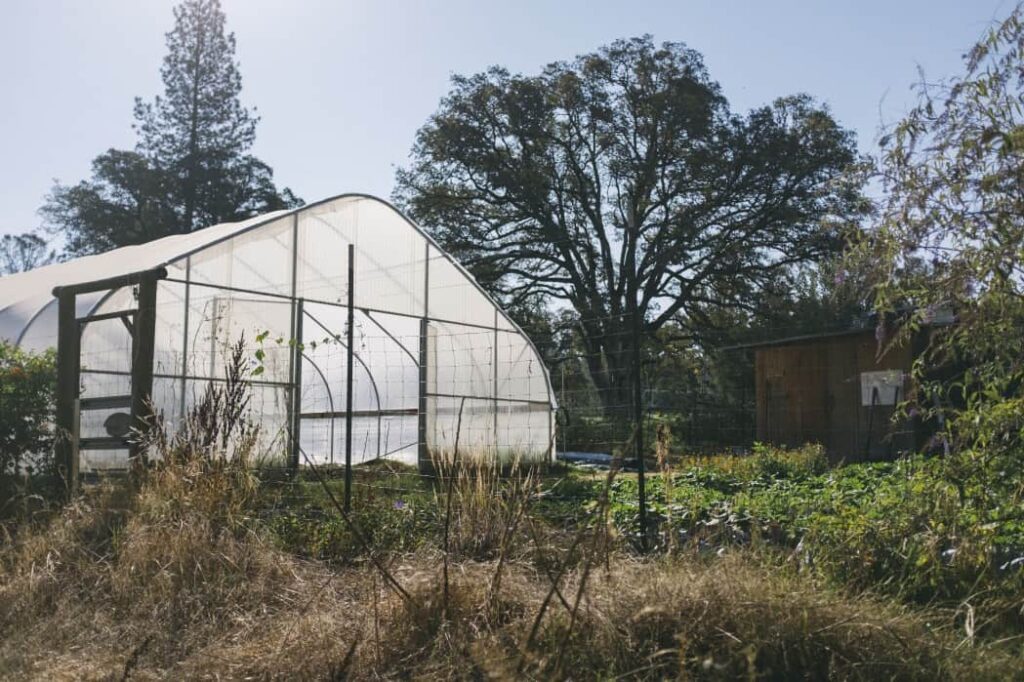
Ensuring Security with Greenhouse Enclosure Fences
Security is an important consideration when it comes to greenhouse enclosure fences. Here are some factors to consider to ensure the security of your greenhouse enclosure:
Security Considerations for Greenhouse Enclosure Fences
- Height: Choose a fence height that deters unauthorized access and makes it difficult for intruders to climb over.
- Material strength: Opt for fence materials that are strong and durable, such as metal or reinforced vinyl, to prevent breakage or tampering.
- Gate security: Ensure that the gate of your greenhouse enclosure is equipped with a sturdy lock or security system to prevent unauthorized entry.
- Visibility: Strike a balance between privacy and visibility. A fence that offers some visibility can deter potential intruders by making your greenhouse enclosure more visible and less attractive for trespassing.
By considering these security factors, you can create a secure environment for your greenhouse enclosure, providing peace of mind for your plants and yourself.
Fence Features That Enhance Security for Greenhouse Enclosures
Certain features can enhance the security of your greenhouse enclosure fence. Consider incorporating the following:
- Reinforced gate: Choose a gate that is sturdy and difficult to breach. Consider a design with reinforced hinges, a lockable latch, and tamper-resistant hardware.
- Security cameras: Install security cameras near the fence line to monitor potential threats and deter intruders. Ensure they cover the entry points and vulnerable areas of your enclosure.
- Motion sensor lights: Well-placed motion sensor lights can act as a deterrent and provide additional security by illuminating any suspicious activity near your greenhouse enclosure at night.
By utilizing these fence features, you can enhance the security of your greenhouse enclosure and create a safer environment for your plants.
Security Systems and Technologies to Complement Greenhouse Enclosure Fences
In addition to the fence itself, consider integrating security systems and technologies to further enhance the security of your greenhouse enclosure:
- Alarm systems: Install an alarm system that detects unauthorized access attempts and triggers an alarm or sends notifications to alert you of potential security breaches.
- Surveillance systems: Set up surveillance cameras inside and outside your greenhouse enclosure to monitor any suspicious activity in real-time.
- Access control: Implement access control measures such as key cards or biometric systems to limit access to authorized individuals only.
By combining these security systems and technologies with a well-designed and secure fence, you can ensure the protection and safety of your greenhouse enclosure.
Adding Decorative Elements to Greenhouse Enclosure Fences
Incorporating decorative elements into your greenhouse enclosure fence can enhance its aesthetic appeal and make it a visually pleasing addition to your property. Consider the following:
Aesthetics and Decorative Features of Greenhouse Enclosure Fences
- Fencing materials: Choose fence materials that offer visual appeal, such as wrought iron with intricate designs or vinyl fences with textures that mimic the appearance of wood.
- Decorative posts and caps: Consider decorative posts and caps that add a touch of elegance or uniqueness to your fence design.
- Lattice panels: Incorporate lattice panels into your fence design to create a visually interesting space that allows airflow and glimpses of your greenhouse enclosure.
- Arbors or gates: Install an arbor or decorative gate as an entrance to your greenhouse enclosure, adding charm and character to the overall design.
By incorporating these aesthetics and decorative features into your greenhouse enclosure fence, you can create a visually appealing and inviting space.
Choosing Fence Designs That Complement Greenhouses
To ensure a cohesive look, choose fence designs that complement the architectural style of your greenhouse. Consider the following:
- Traditional: If your greenhouse has a traditional or rustic design, opt for fence designs that feature natural materials like wood or wrought iron.
- Modern: For contemporary or modern greenhouse styles, sleek and minimalistic fence designs made from materials like vinyl or metal can complement the overall aesthetic.
- Customization: Consider custom fence designs that mimic the shapes or patterns found in your greenhouse structure, creating a harmonious and coordinated look.
By carefully selecting fence designs that complement your greenhouse, you can create a unified and visually pleasing outdoor space.
Creative Ideas for Incorporating Decorative Elements
In addition to standard decorative elements, consider these creative ideas to further enhance the aesthetics of your greenhouse enclosure fence:
- Vertical gardens: Use climbing plants or vertical garden systems along the fence to add a burst of greenery and maximize your limited space.
- Artistic elements: Attach small artistic elements such as sculptures or decorative panels to the fence to create a unique and visually interesting focal point.
- Lighting effects: Incorporate LED strip lights or solar-powered lighting fixtures along the fence line to create a magical ambiance during evenings.
By implementing these creative ideas, you can transform your greenhouse enclosure fence into a work of art that enhances the beauty and enjoyment of your space.
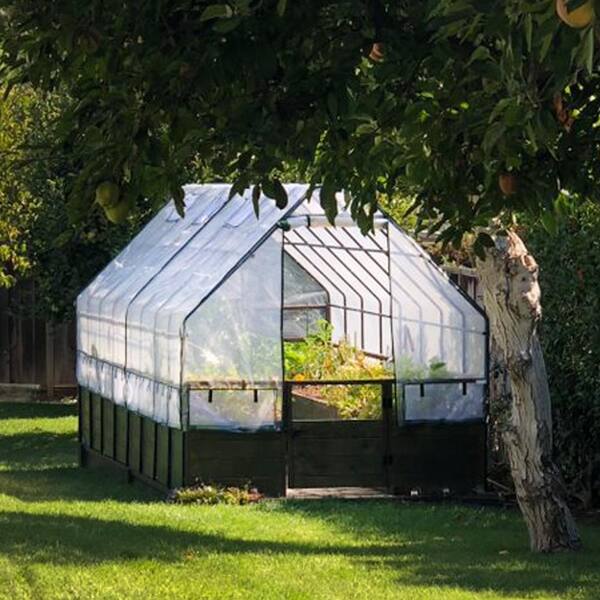
Common Questions and Answers about Greenhouse Enclosure Fences
To provide further clarity and address common concerns, here are answers to some frequently asked questions about greenhouse enclosure fences:
-
Do I need a fence for my greenhouse enclosure?
Yes, a fence for your greenhouse enclosure is recommended to provide protection, security, and privacy. It can help keep out pests, deter unauthorized access, and create a controlled environment for your plants.
-
What are the advantages of using a chain-link fence for greenhouse enclosures?
Chain-link fences are affordable, durable, and easy to install. They provide good visibility, require minimal maintenance, and can be customized with privacy slats for added privacy.
-
How can I maintain a wooden fence for my greenhouse enclosure?
Wooden fences require regular maintenance, including staining or painting every few years and sealing against moisture. Regular cleaning and prompt repair of any damage are also important to prolong the fence’s lifespan.
-
Which fence material is most environmentally friendly for a greenhouse enclosure?
Chain-link fences are considered environmentally friendly due to their recyclability and minimal environmental impact during manufacturing. However, vinyl fences made from recycled materials and those that can be recycled at the end of their life are also eco-friendly options.
-
What factors should I consider when determining the size of a fence for my greenhouse enclosure?
Factors such as property size, desired level of enclosure, and future expansion plans should be considered when determining fence size. Accurate measurements and adherence to local regulations should also be taken into account.
-
Can I use a greenhouse enclosure fence to enhance privacy?
Yes, certain fence types like solid wood, vinyl, or chain-link with privacy slats can enhance privacy for your greenhouse enclosure. Incorporating additional privacy measures such as tall hedges or privacy screens can further increase privacy.
-
What security features should I look for in a fence for my greenhouse enclosure?
Look for fence features such as sturdy construction, appropriate height, lockable gates, and tamper-resistant hardware. Integrating security systems like alarms, surveillance cameras, and access control can further enhance the security of your greenhouse enclosure.
-
How can I add decorative elements to my greenhouse enclosure fence?
You can add decorative elements to your greenhouse enclosure fence by choosing fence materials with aesthetically pleasing designs, incorporating decorative posts or lattice panels, installing arbors or gates, and considering vertical gardens or lighting effects.
-
Are there any regulations or permits required for greenhouse enclosure fences?
Regulations and permit requirements for greenhouse enclosure fences can vary depending on your location and local building codes. It is important to check with your local authorities and secure any required permits before installing a fence.
-
What is the average cost of installing a fence for a greenhouse enclosure?
The cost of installing a fence for a greenhouse enclosure can vary depending on factors such as fence materials, size, design, and labor costs. It is recommended to obtain quotes from reputable fence contractors to get an accurate estimate for your specific project.
By addressing these common questions, you can provide readers with valuable information and guidance when it comes to greenhouse enclosure fences.
